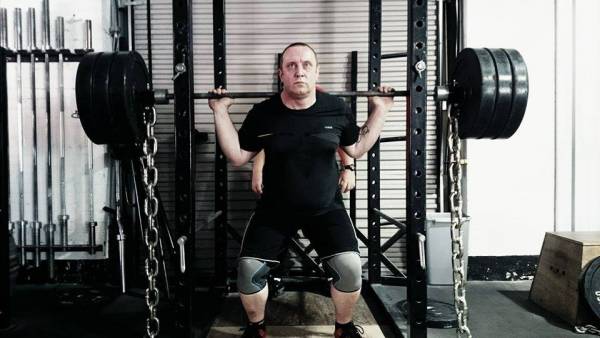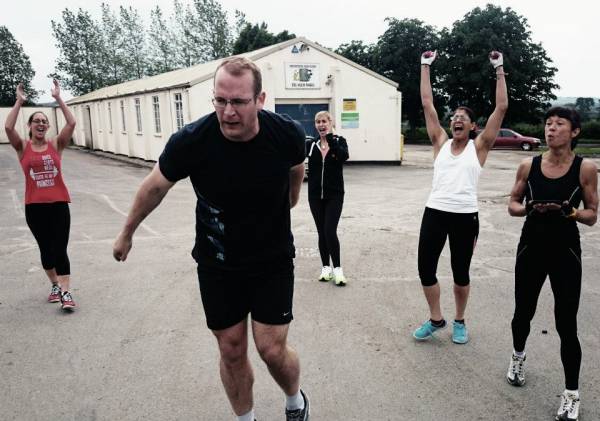Since writing The Rules of Strength Training (Part 1): 25 Things I Have Learned, I’ve learned some more stuff.
Actually, I wanted to include many of these points in the first 25, but ran out of space. Others are lessons I’ve learned since. And a few are items I’ve changed my mind on.
So, here are 25 more rules of strength training I’ve learned on my journey as a strength coach and athlete.
1. Strength Is Specific
Whenever anyone asks me my definition of strength, I have a simple answer – strength is strength for a task. Strong is specific to what you want to do, and you’d do well to train with that in mind.
2. Position > Speed
No amount of speed is going to compensate for bad positions. The Olympic lifts are a perfect example. Do bad stuff quickly, and you’re not carrying that strength over to anything. You’re just getting better at doing bad stuff quickly.
3. Exercise Versus Movement
Don’t confuse the two. When I go to the gym to lift, I’m exercising within specific time, modal, and intensity domains. The incidental movement that I include as part of my life throughout the rest of my day is just as important, if not more so, to my health and strength.
4. Play Time Is Important
In a world of reps, sets, and times, it’s important to allow the mind and body to explore the possibilities of different modes of movement (as opposed to exercise). I include a weekly play day in my schedule.
5. 80/20 Works
I’m an all-or-nothing type of guy by nature. If I can’t give it my all, I’ll do nothing. But I’m learning. The truth is, for most of us, 20% of the stuff we do is going to give us 80% of the gains. And 80% of the time, for 80% of people, 80% of the gains is enough.

6. The Whole Is Greater Than the Sum of Its Parts
80% works. But if you have the ability and resources to push to 100% (and by that I mean nail down every aspect of your training, nutrition, and lifestyle) these elements will come together to give you unparalleled strength gains. Just don’t expect to be able to maintain this more than 20% of the time.
7. Not Everything Is for Everyone
Strength athletes are a passionate bunch. And it’s easy to believe your flavor of strength is for everyone. I’ve made that mistake before. But the truth is, not every form of lifting is right for everyone. Yes, that means not everyone should back squat, or barbell snatch for that matter.
8. The CNS Rules Everything
And I mean everything. You don’t get stronger; your CNS allows you to display the strength you have. The trick is getting your nervous system to allow you to do this. And that comes from learning how to use your body as a whole and convincing your brain what you are lifting is within your capabilities.
9. The Importance of Tension
The ability to create and maintain tension is a massive part of convincing the brain to allow the lift you are performing to take place successfully.
10. Lifting Heavier and Getting Stronger Are Not the Same
Lifting heavier doesn’t necessarily make you stronger. But getting stronger will allow you to lift heavier. So think before you charge all guns blazing towards lifting heavier and heavier and heavier…and injury.
11. Go Home, Not Go Hard
If, when faced with this choice on a daily basis, you choose to go home rather than go hard, you will become stronger. That’s not to say there isn’t a place for going hard. It’s just not on a daily basis.
12. You Need to Enjoy What You Do
It’s no good to have a noble end goal if your pathway to get there sucks. If you don’t enjoy the process in some aspect, you will, at some point, burn out – either physically or mentally. Believe me. I’ve been there.

13. Simple > Fancy
The cleverest programming is the stuff that almost looks too simple to be effective. The cleverest coaches are the ones who can distil the most complex functions into simple cueing.
14. Glutes
There isn’t a single lift you will do in the gym that can’t be improved through better utilization of the glutes.
15. Lats
There isn’t a single lift you will do in the gym that can’t be improved through better utilization of the lats.
16. Improvement Within the Movement
The first place to look when you’re trying to improve a movement is the movement itself, not fancy toys and tools. For example, if you’re looking to improve grip on the deadlift, put away your Captains of Crush, and pick up a fat bar, or do some static holds at the top of the lift.
17. Movement Is Subconscious
If I ask you to pick up the coffee cup in front of you, you’re not going to break down each part of the movement in your head before you do it. Movement is subconscious. So work with this knowledge. Use drills that are self-correcting and cues that work on multiple levels.
18. Everyone Moves Differently, and So They Should
No matter what you learned on your weekend certification, not every squat should look the same. Learn what makes a movement efficient and effective (these will be the same if you’re in the right positions) without forcing yourself, or your clients, into unnatural shapes.
19. There Is No One Right Way
There’s no one right way of doing anything. It depends on you and what you are trying to achieve. A wide stance, sit back-style box squat is the only way of box squatting according to Louie Simmons. And this works well if you wear a lifting suit. However, a raw lifter wanting both a strength and movement carryover into CrossFit has a whole different set of objectives. For this person, sitting less far back and using a narrower stance are perfectly valid tactics.
20. Results Are Everything
If you’re not getting results, nothing else matters. The best program in the world is not the best program in the world if it doesn’t help you achieve the results you’re after.
21. Consistency Is key
Consistency of (correct) application is the key to unlocking freakish strength gains.
22. Build Base Strength Over Time
The time it takes to build strength is in direct proportion to the sustainability of this strength. Proper, long-lasting strength is built over months and years, not days and weeks. So don’t be surprised if your max squat from that three week secret Russian squat cycle you did isn’t as high the next time you test it.
23. Auto-Regulation is Critical
If you’re not pushing enough, you’re leaving potential gains on the table. If you over-push yourself, you’re leaving potential gains on the table as well as beating yourself into the ground. A form of auto-regulation, such as use of the RPE scale, is critical to ensure you get the most out of your training and are able to do so with consistency. And we all know what consistency leads to.
24. You Need to Fail
But not often. In fact, most of the other items on this list point away from lifting to failure. But there are valuable lessons in breaking the rules on occasion. And none more so than finding out what happens when you fail (clue: if you’ve never failed a lift before, it’s not as bad as you think.)
25. All Strength Principles Boil Down to Basic Science
Go back to your school physics books and look up force, motion, momentum, energy, and gravity for starters. Now apply these principles to your lifts.
I’ve learned these things through experience. And I’ve collected this experience through application – not all of it correct. Whether you agree with me or not (and especially if you don’t), be bold and go and apply my lessons to your training. You might learn something. And I’d love to learn back from you when you do.
Check out these related articles:
- Greasing the Groove – How to Make It Work for You
- How Play Can Make You Fitter and Happier
- Magical Movement – the Importance of Virtuosity
- 9 Sets of Strength Training Mistakes and How to Avoid Them
- What’s New On Pulse Beat Fit Today
Photos courtesy of Strength Education.






